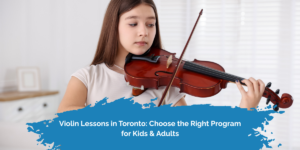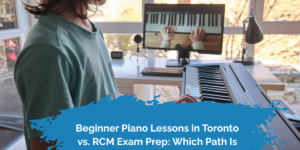As a music teacher, some of the most common questions I get asked in my music classes are “how often should I practice?”, “how long should I practice for?”, and “what should I practice?”
Of course, there’s no set answer to any of these questions. The best practice routine is going to be the one that works for you, depending on your schedule, lifestyle, and interests. There will likely need to be some trial and error involved until you settle into the routine that works for you. However, in the following guide, I hope to give you the tools you’ll need to stay motivated, improve quickly on your instrument, and most importantly, have fun!
How often should I practice when taking music lessons?
Let’s begin with the first question, “How often should I practice”? The short answer to that question is, as regularly as possible. Integrating practice into your daily routine will help you improve faster, observe your progress and stay motivated. The key is to make it a routine, like taking a shower every day or going to the gym. Life gets hectic fast, and it’s easy for practicing to fall to the bottom of the to-do list. Whether you’re an adult working long hours at the office, or a kid struggling to keep up with the seemingly infinite stream of homework, the truth is we’re all pretty busy. Find a time that works for you and stick to it. If you turn practicing into the thing you do when you have time, you’ll never be able to make the time. Practice first thing in the morning, practice at lunch, practice right after work/school, practice before you go to bed. The time you choose doesn’t really matter, as long as you stick to your routine. If you’re able to practice your music lessons at home every day, that’s great! If not, try to have as many set practice days as possible. The secret is frequency, not duration. Which brings us to our next question.
“How long should I practice for”? At first you might be thinking as long as possible right? But it’s not quite that simple. Our finger, hands, arms and diaphragm are all muscles, and muscles need rest! You may have heard stories about your favourite musicians practicing for 8 hours a day or
more to get to where they are. But for most people, that’s neither practical nor effective. How long you can practice for is going to differ for everyone, but it’s a good idea to start at a mid point and then increase or decrease the duration as necessary. The classic approach begins at around 30 minutes. Now, that’s 30 minutes of actual practice time, not just holding your instrument and scrolling through your social media. If you’re just starting out on your instrument, you may even want to try closer to 20 minutes at first. Stringed instruments, in particular, tend to be very hard on the fingers until your calluses develop.
What should I practice when learning from a music school?
There’s no need to play through agony just to reach a time goal. Listen to your body! When something starts to hurt or begins to feel like a chore, it’s time for a break. If 30 minutes begins to fly by and you want to speed up your progress, try increasing your time to 45 or even 60 minutes. There’s no set limit to how long you can play your instrument for, just as long as your body and mind are still feeling good, and you’re able to give your 100% to practicing.
This brings us to our final question, and perhaps the most important of all. “What should I practice?” Many people seem to believe that the less enjoyable an exercise or a piece of music is to play, the more beneficial it is for us to practice. In reality, it’s actually quite the opposite. Stop playing things you hate!
Music is all about having fun, learning is all about having fun. You have to actually care about what you’re learning in order to retain the information. The whole idea of ‘suffering for the passion’ is a little outdated. If you follow that path, you may lose the passion altogether. Having a balanced practice routine means focusing on the things you enjoy. Regardless of what skill or concept you’re trying to learn on your instrument, there’s always a fun way to do it.
Trying to work on your speed? Learn a fast song that you like. None of the songs you like are very fast? Try taking a slower song you like and see what happens when you play it fast. If you’re trying to understand song keys, try figuring out what key your favourite songs are in. Also, don’t get stuck on one thing! If you can’t seem to improve on one specific element of your playing or understanding, try taking a break and focus on another element for a little while. There’s no need to get frustrated or bitter while trying to improve. You will improve, it may just take a little time.
Remember, music is a lifelong journey, and it doesn’t really matter where you end up, as long as you enjoy the ride. Now go practice!
About the author:
Author Connor is a multi – instrumentalist, songwriter, composer and producer. Well versed in most musical styles, he believes in a “listening first” teaching approach. Developing an understanding of what each student wants to achieve, and how they learn best. Connor creates a unique teaching program for each individual student, rather than a “one size fits all” approach. Instruments taught include guitar, bass, drums, ukulele and piano lessons. He also places a high level of importance around creativity, fostering a passion for the arts and ensuring all students are encouraged to explore their creative side. Having fun is always the cornerstone for all of Connor’s classes. Signup for his trail classes in Elite Music, the best Music School in Toronto, GTA and East York today!





